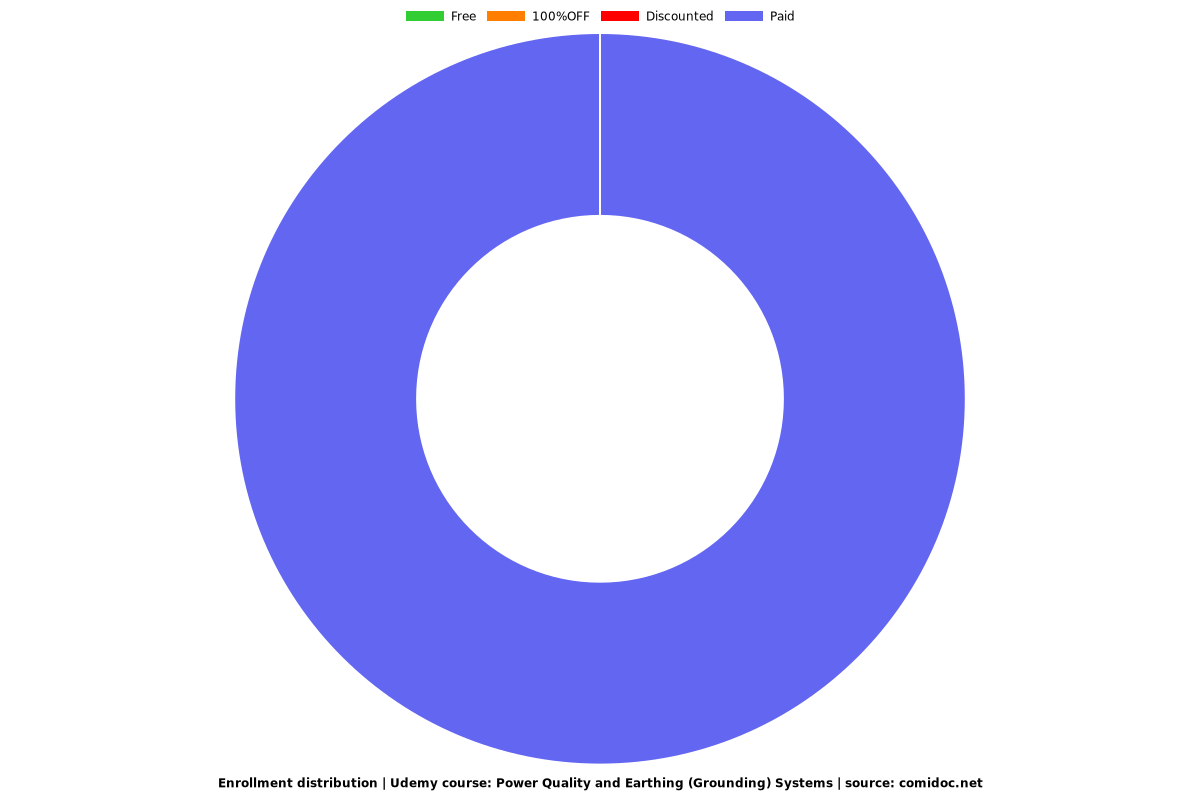Power Quality and Earthing (Grounding) Systems
PQ & Earthing
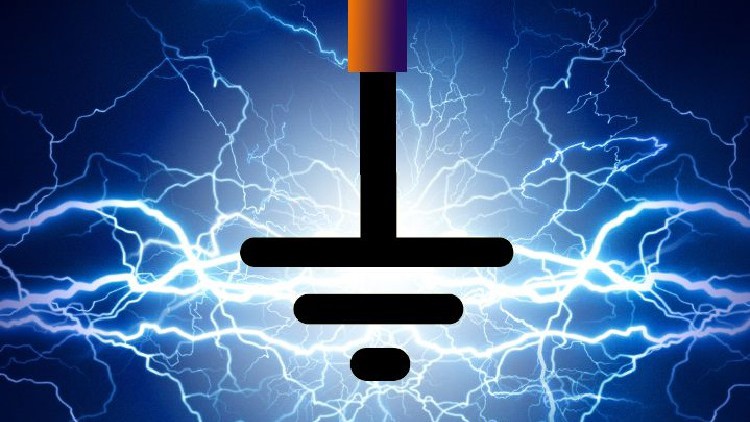
What you will learn
Understanding the fundamental concepts of power quality (PQ) problems (types, characteristics, and causes) and related standards.
Understanding different stages and procedures required to conduct and implement on-site PQ scurvies.
Knowledge of different PQ monitoring equipment and techniques and capability of selecting appropriate equipment for monitoring a given phenomenon.
Identification of PQ problems mitigation equipment and techniques as well as study of the effect of earthing system quality of PQ-state and study of power quality disturbances related to inadequate earthing systems.
Understanding of requirements, objectives, planning, and properties of earthing systems and study of related standards.
Understanding various issues related to earth electrode subsystems.
Understanding techniques for various earth/earthing systems resistance measurements and analysis of various affecting parameters.
Design of earthing systems for various applications considering various reasonable configurations.
Troubleshooting of various earthing systems caused problems.
Why take this course?
The users of electric energy expect a reasonable degree of reliability and quality of service. In a broad sense, Power Quality (PQ) can be defined as “any power problem manifested in voltage, current, or frequency deviations that result in failure or misoperation of customer equipment”. Also PQ can be defined as “a set of electrical boundaries that allows equipment to function in its intended manner without significant loss of performance or life expectancy”. Conditions that provide satisfactory performance at the expense of life expectancy or vice versa are not acceptable. Why should power quality be a concern to facility designers, operators, and occupants? When the quality of electrical power supplied to equipment is deficient, performance degradation results. Also, good power quality for one piece of equipment may be unacceptable for another piece of equipment sitting right next to it and operating from the same power lines, and two identical pieces of equipment can react differently to the same power quality due to production or component tolerances. Some machines even create their own power quality problems. Given such hostile conditions, it is important for an engineer entrusted with the design or operation of power systems, or manufacturing process plant to be knowledgeable about the basics of power quality.
The primary function of the power quality standards is to define and set limits for normal operation, and to define the terminology used to describe PQ disturbances. Many organizations have developed standards to deal with PQ issues, but most universally accepted standards for PQ are IEC and IEEE standards. Research in the PQ discipline can be broadly divided into fundamental concepts, monitoring, modeling, analysis, mitigation, the effects of PQ on end-user equipment, and instrumentation for PQ improvement.
The survey is a methodical step-by-step investigative process used to successfully resolve power quality concerns. The process is effective, but very meticulous and requires a disciplined and up-front effort at the start during the information gathering stage for successful PQ enhancement. Based on measuring equipment requirements, PQ disturbances can be classified into two main categories: (1) Normal deviation around the steady-state operating conditions and (2) Abnormal deviation of voltage, current, and frequency. Capability of appropriately selecting, installing, and adjusting PQ monitoring equipment is a major step towards assessment and mitigations of PQ problems.
It is known that one of the most common problems related to power quality is wiring and grounding. It has been reported that approximately 70 to 80% of all power quality related problems could be attributed to faulty connections and/or wiring. Most engineers view earthing mainly as a method to protect equipment from damage or malfunction. However, the most important element is operator safety. Proper earthing is basic to protection against ac line disturbances. This applies whether the source of the disturbance is lightning, power-system switching activities, or faults in the distribution network. Proper earthing is also a key element in preventing radio frequency interference in transmission or computer equipment. Moreover, power quality can be significantly degraded due to improper earthing. Implementing an effective ground network is not an easy task. It requires planning, quality components, and skilled installers. It is not inexpensive. However, proper earthing is an investment that will pay dividends for the life of the facility.
This course provides an in-depth analysis of the fundamental issues in the PQ discipline considering related standards, practical case studies. The correlation between PQ problems and mitigation through proper earthing system is well explained through both theory and practical case studies. Also, a detailed design of earthing & bonding systems is given in details. The course actually combines two related topics; power quality and earthing.
The main objectives of the course are:
Understanding the fundamental concepts of power quality (PQ) problems (types, characteristics, and causes) and related standards.
Understanding different stages and procedures required to conduct and implement on-site PQ scurvies.
Knowledge of different PQ monitoring equipment and techniques and capability of selecting appropriate equipment for monitoring a given phenomenon.
Identification of PQ problems mitigation equipment and techniques as well as study of the effect of earthing system quality of PQ-state and study of power quality disturbances related to inadequate earthing systems.
Understanding of requirements, objectives, planning, and properties of earthing systems and study of related standards.
Understanding various issues related to earth electrode subsystems.
Understanding techniques for various earth/earthing systems resistance measurements and analysis of various affecting parameters.
Design of earthing systems for various applications considering various reasonable configurations.
Troubleshooting of various earthing systems caused problems.
Screenshots
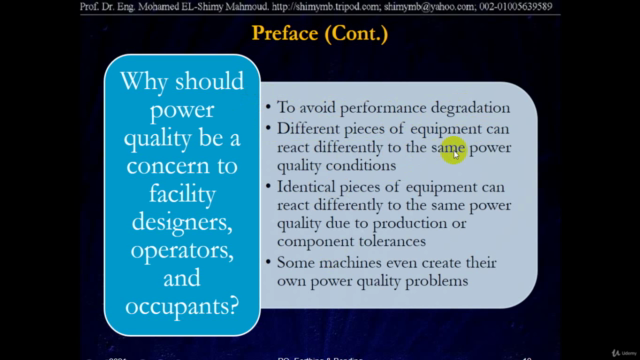
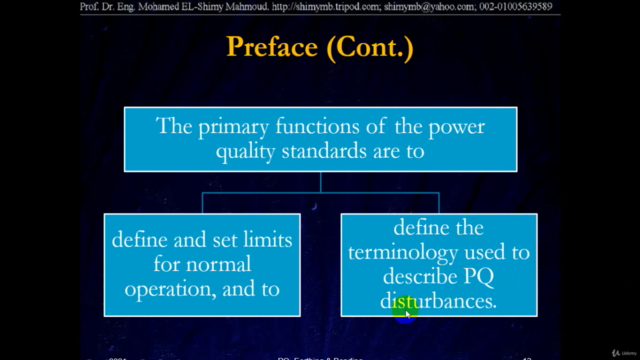

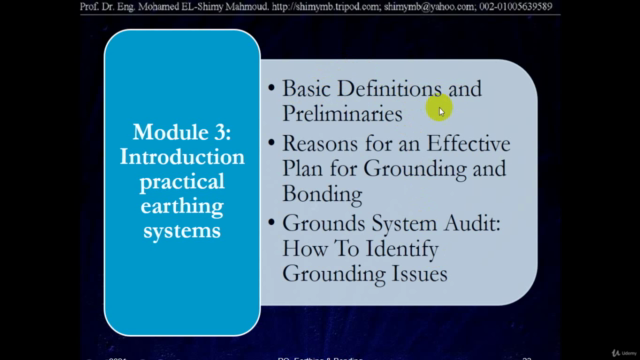
Charts
Price

Rating
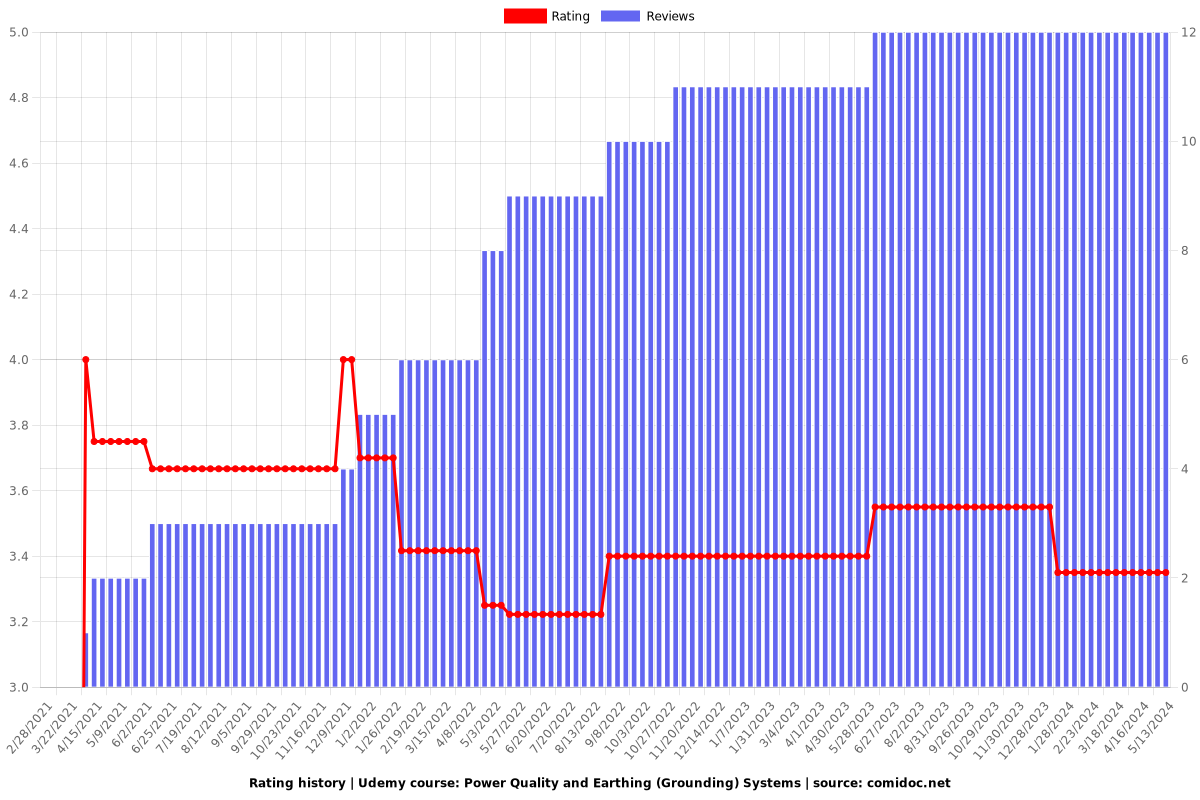
Enrollment distribution
